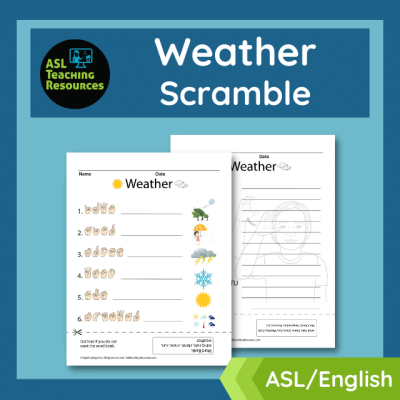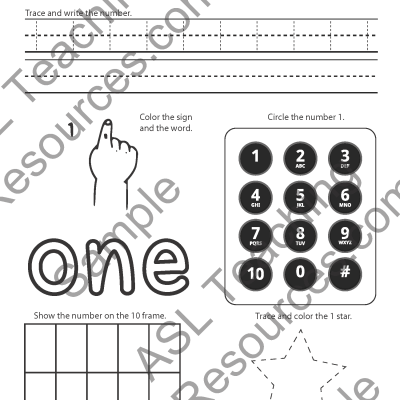Description
Tracking the Weather will have your students record changes and recognize patterns within the weather. Weekly and monthly trackers, each with an observation writing prompt, will help your students understand why temperature is important to them. In addition, learn to sign “Weather” in sign language.
Tracking the Weather includes
- Weekly
- Weather tracker
- Weekly observation writing prompt
- Monthly
- Weather tracker
- Monthly observation writing prompt
- Sign Language Support
Tracking Mini-project:
Students can record real-time weather observations. This mini-project is excellent for a weather lesson or as a fun extra science project. Every day, students will keep track of the weather. Then, they’ll record it on the weekly or monthly graph. Finally, students will tally and write using the weather tracker observation prompt to finish this mini-project.
Take graphing and tracking the weather to the next level by adding one or more of these ideas to your weather unit.
- Color the weather calendar. Take blank calendar(s) and place them in a folder. After your morning meetings, have students get out their calendar folder, find that day and draw- color the weather. This can be done all school year too.
- Use a Weather Wheel Chart during your morning meeting to jumpstart a discussion about the weather outside.
- Share fun facts about the weather – look them up together online or in a book.
- Read plenty of fun weather books. Make it an adaptive book by including these Weather Flashcards with Sign Language.
Common Core
- CCSS.L.K.2 Demonstrate command of the conventions of standard English capitalization, punctuation, and spelling when writing.
- CCSS.W.K.2 Use a combination of drawing, dictating, and writing to compose informative/explanatory texts in which they name what they are writing about and supply some information about the topic.
- CCSS.W.K.7 Participate in shared research and writing projects (e.g., explore a number of books by a favorite author and express opinions about them).
- CCSS.K.CC.C.6 Identify whether the number of objects in one group is greater than, less than, or equal to the number of objects in another group, e.g., by using matching and counting strategies.
- NGSSK-ESS2-1 Use and share observations of local weather conditions to describe patterns over time. Examples of qualitative observations could include descriptions of the weather (such as sunny, cloudy, rainy, and warm); examples of quantitative observations could include numbers of sunny, windy, and rainy days in a month. Examples of patterns could include that it is usually cooler in the morning than in the afternoon and the number of sunny days versus cloudy days in different months. Assessment of quantitative observations limited to whole numbers and relative measures such as warmer/cooler.
5-Day Weather Challenge
Teach Weather in the Classroom the Fun Way with English and Sign Language. Wondering where to start? This five-part training provides step-by-step guidance and ASL PDF resources to help you succeed.
Learn more here! Weather in the Classroom
👉🏿 Additional Resources 👈🏻
Collect more Weather fun here.
ASL Boom™️ Cards here.
Sign Language Books on Amazon here.
Subscribe to our YouTube channel.
Sign Language in the Classroom: Quick Guide here.
Love this product? Explore Membership Options Here!




Reviews
There are no reviews yet.